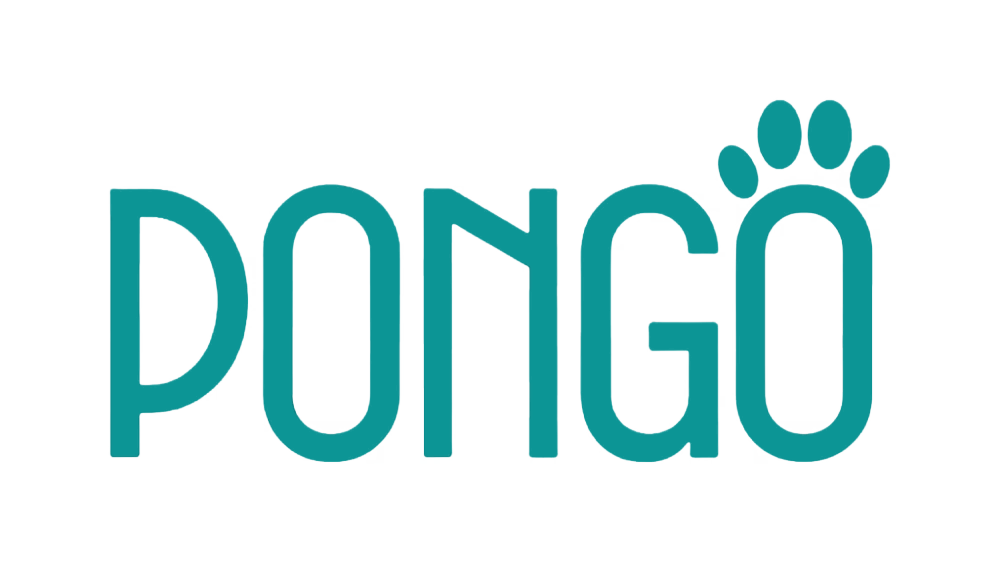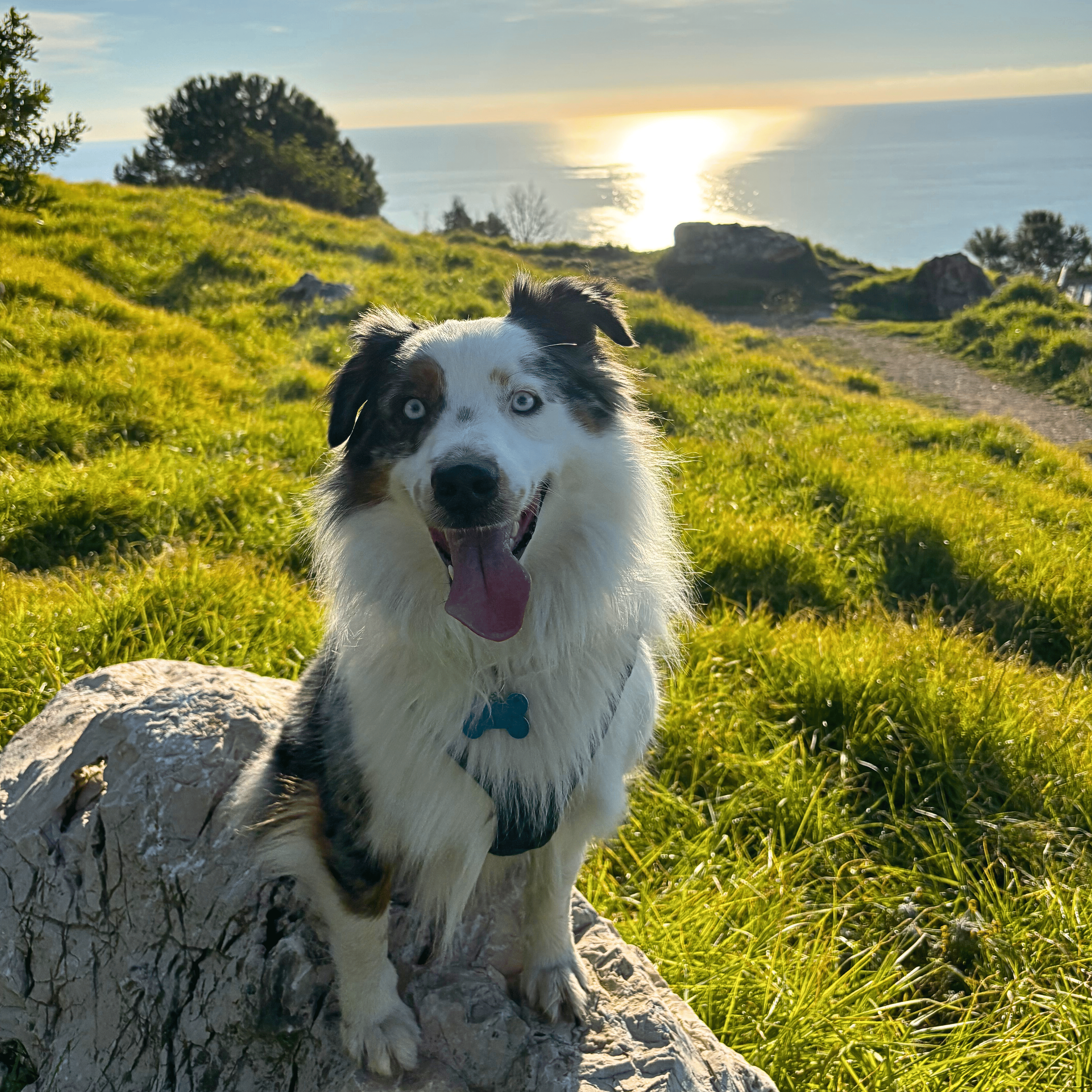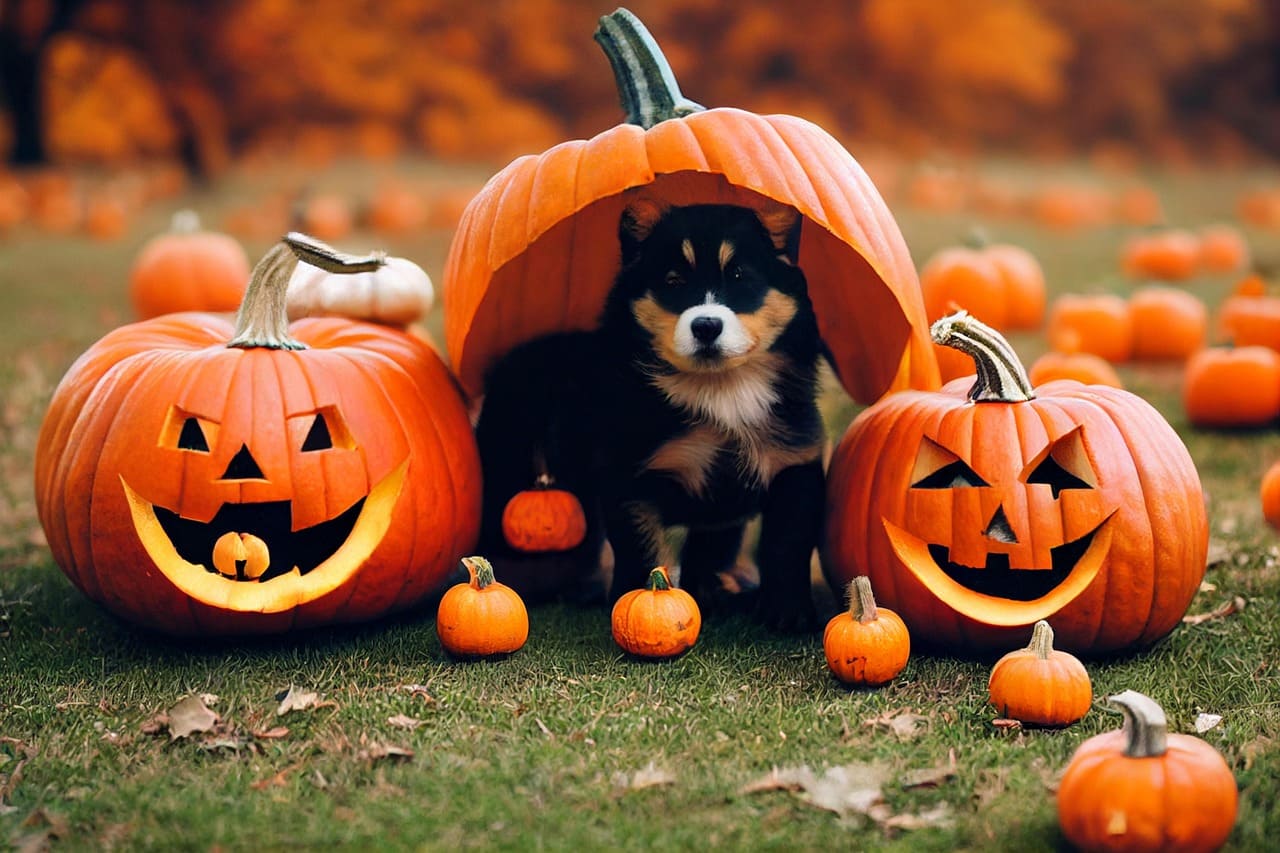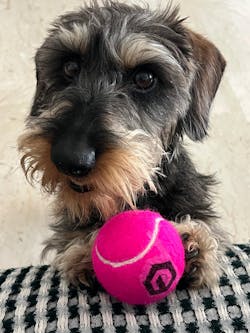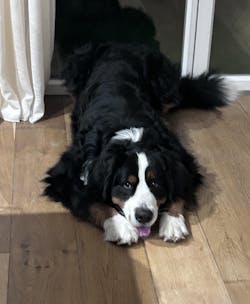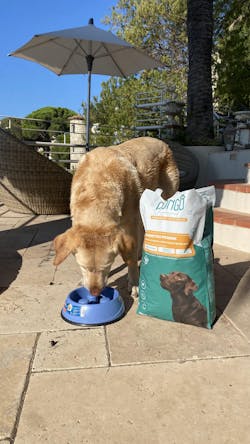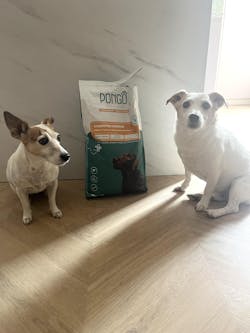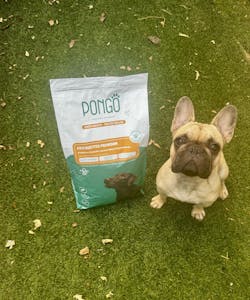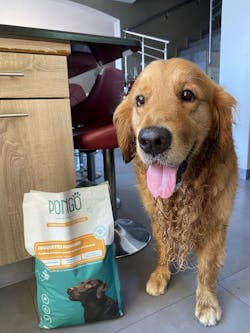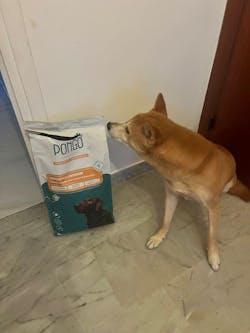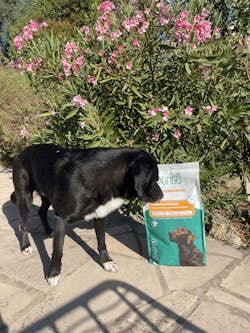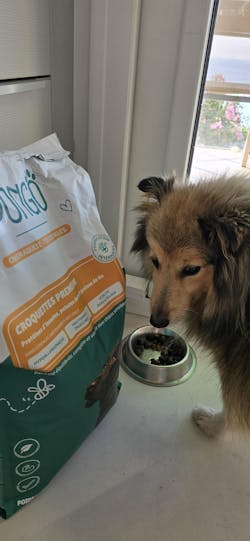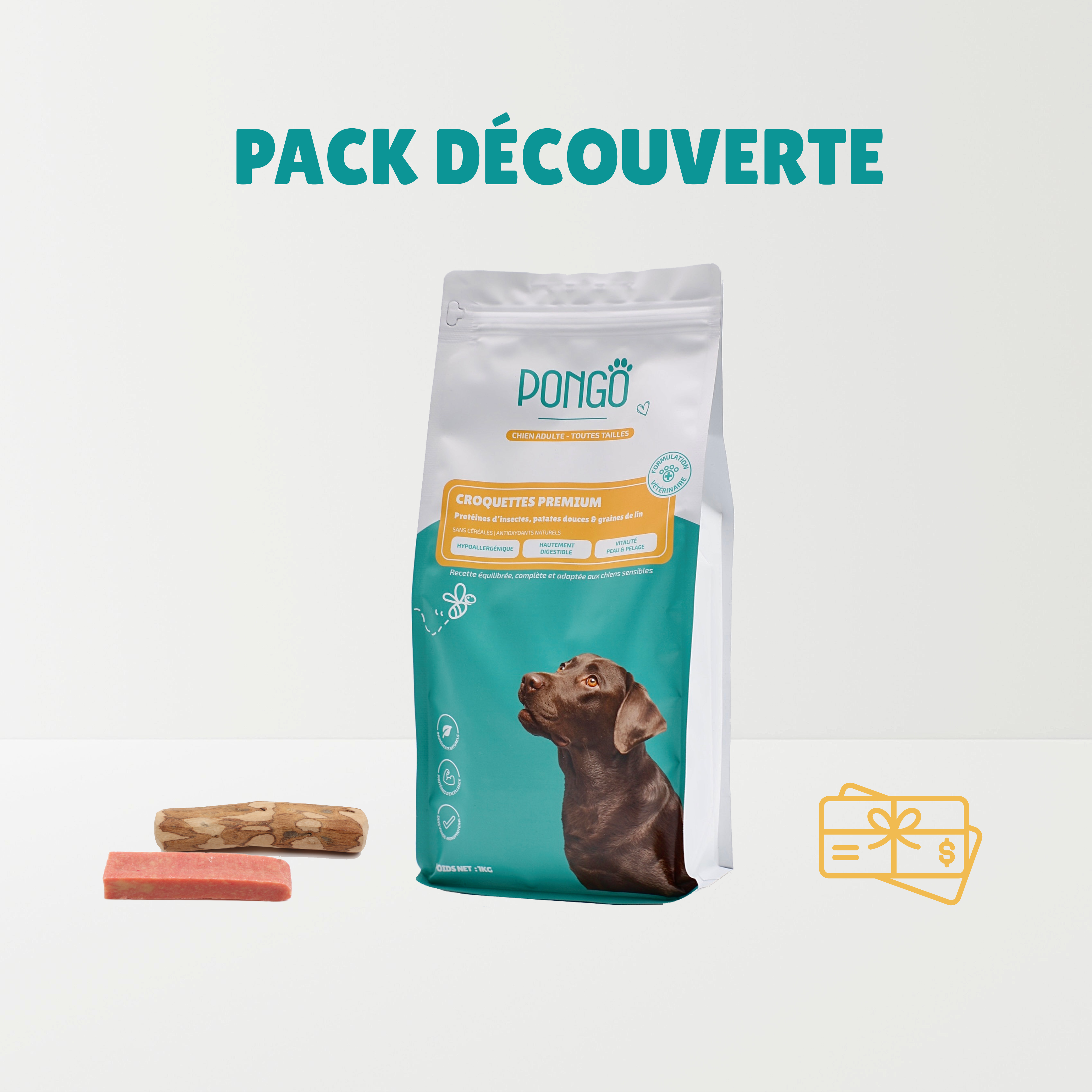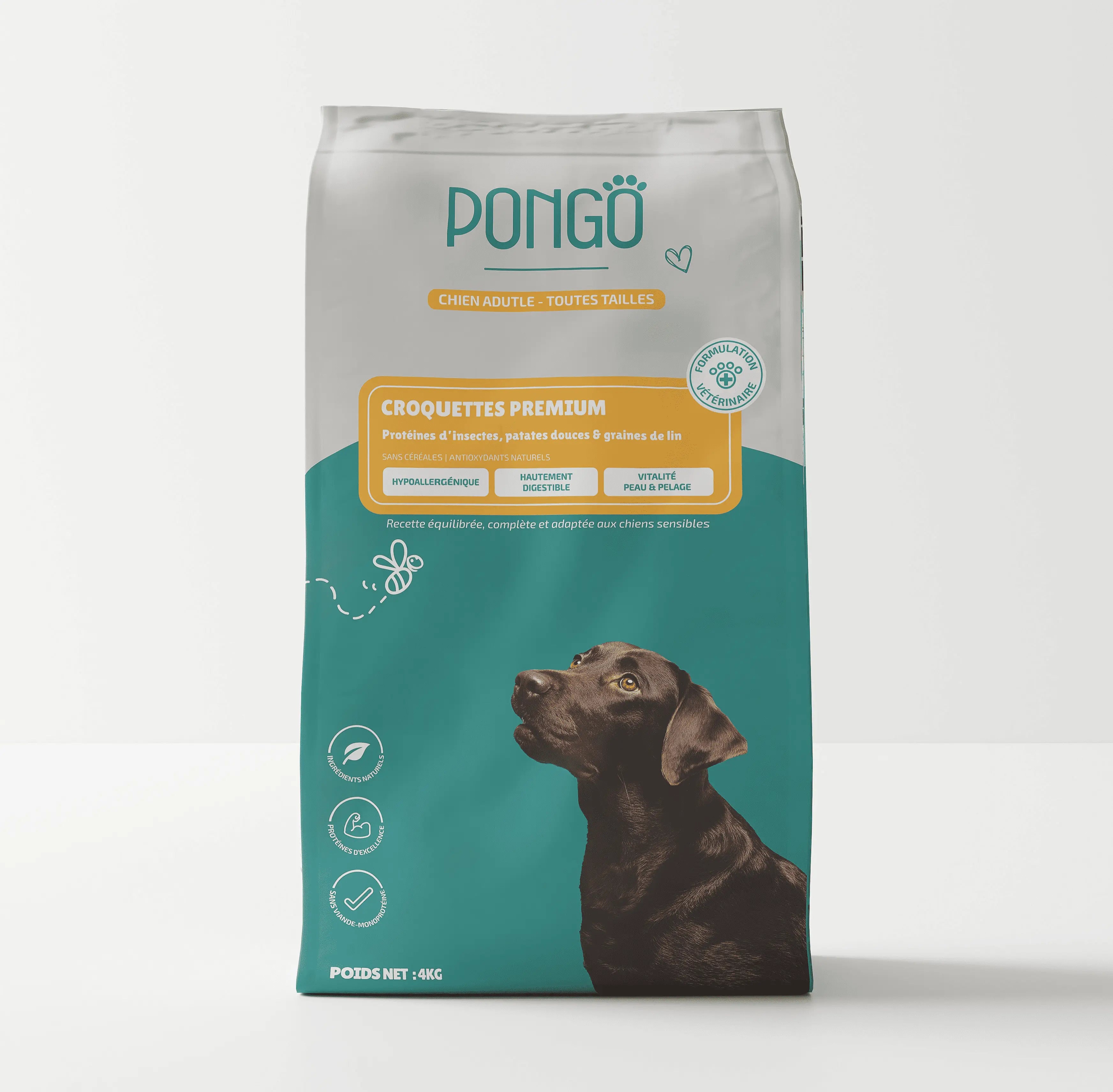My dog is overweight: how do I help him lose weight?
Canine obesity : causes, consequences, and concrete solutions for a healthier weight
Obesity is one of the most common nutritional disorders in dogs, threatening their longevity and quality of life. It should be noted that obesity is also a very common disease in humans, affecting 1 in 8 people worldwide according to the WHO. The two are closely linked, as we will see that obesity in dogs is partly related to the owner's behaviour and lifestyle.
Obesity in dogs is often ignored at first and mistakenly perceived as mere chubbiness. However, this condition is a real disease that requires rapid and structured action from the owner before it becomes more serious.
Based on scientific studies, this article reviews the causes of this scourge, its deleterious consequences, and concrete solutions to help your companion return to a healthy weight. Indeed, helping your dog lose weight can prove to be a real challenge!
Initial steps
If you think your dog is overweight :
-
Consult your veterinarian without delay to confirm your dog's excess weight. Don't wait until your dog is obese to act! Ask the vet to give you your dog's energy needs in order to establish a suitable weight management plan.
-
Find out about the quality of the food you give your dog (kibble, wet food, treats). What is the composition? What are the protein, fibre, and carbohydrate levels? Find all our advice on recognizing good kibbles here.
-
Organize yourself : to help your dog lose weight, you must increase their physical activity, which inevitably requires a little more time. You must therefore find it!

I. The Causes of canine obesity : beyond the bowl
Obesity is the result of an imbalance between energy intake and energy expenditure. However, research shows that several complex factors, often related to the owner, are involved.
1. Factors related to the owner and lifestyle
- The permissive parenting style : a study conducted among Dutch owners (van Herwijnen et al., 2020) established a link between a permissive canine parenting style and excess weight in dogs. This style, characterized by high responsiveness to the dog's demands (giving food in response to a request) without setting limits (low requirement for exercise), increases the risk of obesity.
- Inappropriate feeding : giving table scraps almost after every meal, home-prepared food, or excessive treats (outside the daily ration) is a major risk factor. Also, be vigilant about the composition of the kibble you may give your dog. Is the first ingredient a cereal? What is the percentage of carbohydrates? Owners of obese pets tend to be less strict about the quality of the food and the rules regarding the allocation of food.
- Lack of exercise : a low level of physical activity is directly associated with excess weight. The dog is dependent on its owner for exercise.
- Perception of obesity : a European survey (Muñoz-Prieto et al., 2018) revealed that owners who do not consider obesity a disease are more likely to have obese dogs. Ignorance or denial of the severity of their animal's condition is a major barrier to prevention.
2. Factors related to the dog
- Age : older dogs have an increased risk of being overweight. Food must be adapted according to age. Indeed, a senior dog will need fewer calories than an adult dog. Why? The level of exercise is lower, and a general slowing of the metabolism is observed. Be careful, while fewer calories are needed, paradoxically, a highly nutritional food is required (rich in protein, omega 3, antioxidants).
-
Reproductive status : eutering/spaying is a well-established risk factor. Sterilized dogs, especially if they are neutered young (under 11 months), have a higher probability of being overweight. Why? Sex hormones (estrogens and testosterone) play a role in regulating metabolism. Their suppression after spaying or castration leads to a slowing of the basal metabolic rate (the energy expended at rest for vital functions). Consequently, the maintenance energy requirements of a sterilized dog decrease by about 20% to 30% compared to before the operation. If the amount of food remains the same, the excess calories are stored as fat. In parallel, post-sterilization hormonal changes affect appetite-regulating hormones and can thus increase it.
II. Consequences of obesity: deterioration of health
Adipose tissue (fat) is not inert. Indeed, it is considered an active endocrine organ that releases inflammatory molecules. Excess weight has a systemic impact and can lead to serious complications:
-
Reduced longevity : obesity is directly associated with a reduced life expectancy.
-
Musculoskeletal disorders : excess weight puts immense pressure on the joints, worsening or causing problems such as osteoarthritis and orthopedic disorders.
-
Endocrine diseases : obesity can lead to disturbances in normal endocrine functions.
-
Cardiorespiratory problems : fat accumulation can affect the cardiorespiratory system.
-
Increased risk of neoplasia (cancer) : chronic inflammation related to fat can increase the risk of certain cancers.
-
Deterioration of quality of life : obese dogs have a generally reduced quality of life (difficulty moving, reduced activity...).
III. Solutions : a structured weight management program
Helping your dog lose weight can prove to be a real challenge, especially for a small dog that needs to lose 200g-300g... it doesn't seem like much, yet it's a challenge! The good news is that even modest weight loss (5% to 10% of initial weight) can improve the dog's quality of life. Success is based on a combined approach : dietary restriction and increased physical activity, under the supervision of a veterinarian if necessary.
1. Dietary restriction and diet
Veterinary calorie reduction: a veterinarian must calculate the dog's specific energy needs (based on its ideal target weight) and prescribe a hypocaloric diet. Be careful, once again, fewer calories does not mean fewer nutrients! On the contrary, food rich in protein and fiber is favoured to optimize satiety.
Control of intake : all caloric intakes must be taken into account. Non-essential treats must be replaced by very low-calorie alternatives or by a small portion of the daily ration. For example, do you give your dog industrial snacks? Replace them with pieces of raw carrots or their favourite vegetable.
No more snacking : establish strict rules regarding food. Do not give in to food requests and feed your dog only at fixed times and with the prescribed quantity.
Be careful, when talking about calorie reduction, we are not trying to starve the dog! Always ensure you give a sufficient ration based on their size, weight, and age. Do not hesitate to seek help from an animal nutritionist or a veterinarian.
2. Organized physical exercise
Physical activity, although its impact on weight loss is more modest than calorie restriction, is crucial for improving general well-being, increasing muscle mass, and burning fat.
Daily routine : increase the duration and intensity of daily walks. For example :
-
If your walks last 15 minutes, increase them to 25/30 minutes.
-
Take paths with a little elevation gain if you can.
-
Opt for games that help them expend energy: throw balls, frisbee...
Structured programs : in some cases, a supervised exercise regimen can be very beneficial. A study (Chauvet et al., 2011) demonstrated the success of programs using an aquatic treadmill (hydrotherapy), combined with on-leash walks and obedience classes, achieving an average weight loss rate of 1.5% per week.

3. Owner education
The key to long-term success is a change in owner behaviour. It is essential :
-
To consider obesity as a serious disease.
-
To integrate exercise or increase its level of physical activity daily.
-
To provide quality and balanced food. During a diet period, you must prioritize food rich in protein, rich in fibre, and low in carbohydrates.
-
Give your dog's meals at fixed times. Favour at least two meals (one in the morning, one in the evening), rather than giving the whole ration at once.
-
Avoid snacking as much as possible. If you must give a snack, choose a healthy and simple treat.
-
You can also offer chewing treats to your dog to keep them busy (we know that boredom can generate desires to eat...). Be careful here too, choose healthy chewing treats such as olive wood, for example.
IV. Conclusion
Canine obesity is a public health challenge, often linked to owner behaviour. By adopting a role of a "more demanding parent" (but positive and benevolent), providing rigorously controlled food, and ensuring regular physical activity, you have the power to prevent or treat obesity! These efforts are essential to allow your dog a longer, healthier, and happier life.
Furthermore, find out about your dog's breed, as some are prone to gaining weight more easily, such as Labrador Retriever, Golden Retriever, Beagle, Cocker Spaniel, Basset Hound, Cavalier King Charles, Dachshund (Teckel), Bulldog (English and French)...
FAQ - Frequently Asked Questions
1. How can I tell if my dog is overweight ?
The best non-invasive method for assessing your dog's weight is the Body Condition Score (BCS).
-
Observation : look at your dog from above. A waistline (an abdominal tuck) should be visible behind the ribs. Look at them from the side. A ventral tuck (abdomen that slopes up) should be apparent after the rib cage. Assign a score between 1 and 9 based on your observations (from 1 to 3 the ribs and bones are prominent, there is no fat; 8-9 the ribs are not palpable, fat deposits are massive everywhere, waist and abdominal tuck are completely absent. An ideal weight is around 4/5.)
-
Palpation : run your hands over their rib cage. You should be able to feel their ribs easily under a thin layer of fat, without having to press hard. If you have to exert pressure to feel the ribs, your dog is overweight. Similarly, evaluate your observations by assigning a score between 1 and 9.
If your dog corresponds to a BCS of 6 or 7 out of 9, they are overweight. At 8 or 9 out of 9, they are considered obese.
2. Where can I weigh my dog?
-
At the vet : this is the ideal place, as veterinary clinics have professional, precise scales suitable for all dog sizes. Weighing is often free there.
-
At home (small dog) : step onto your own scale to weigh yourself alone, then step on again holding your dog. Subtract your weight from the second measurement to get your dog's exact weight.
-
At the pet store : some large pet stores provide animal scales in their aisles.
3. What weight is considered obese for a dog?
This varies depending on the dog's size, age, breed, and bone structure. Generally, a dog is considered obese if they weigh 20% or more above their ideal weight.
-
For example, if the ideal weight of an adult Labrador is 66 lbs, it is considered obese from 79 lbs.
-
A dog is considered overweight when they weigh between 10% and 19% above their ideal weight.
Only your veterinarian, based on their bone structure and Body Condition Score (BCS), can determine their ideal target weight.
4. How can I help my dog lose weight?
Weight loss rests on two inseparable pillars : calorie restriction and increased exercise.
-
Consult your vet : have your dog's health status evaluated to rule out any medical cause and establish their target weight.
-
Hypocaloric diet : your veterinarian will calculate their daily ration based on their target weight.
-
Increase exercise : start with longer walks or more frequent play sessions. Ensure the exercise is adapted to their physical condition (avoid intense efforts if the dog has arthritis). Gentle activities like hydrotherapy (aquatic treadmill) can be excellent for dogs with joint problems.
-
Eliminate extras : stop table scraps and rich treats.
5. How should I feed an overweight dog?
-
Measure rigorously : use a kitchen scale to precisely weigh each ration. Never feed "by eye" or by just filling the bowl.
-
Switch to a diet food : your veterinarian will often recommend specific kibble or wet food (e.g., "Weight Control" or "Satiety" range) that is less caloric but rich in protein and fiber to maintain muscle mass and ensure satiety.
-
Divide meals : instead of one or two large meals, give three or four small portions spread throughout the day.
6. What is the best kibble for an overweight dog?
The best kibble is one that meets the criteria for a weight reduction diet:
-
Low energy density (hypocaloric) : it provides fewer calories per gram.
-
Rich in protein : to preserve muscle mass during weight loss.
-
Rich in fiber : to increase the volume of the food bolus, slow down digestion, and provide a feeling of satiety.
At PONGO, we offer kibbles rich in fibre and protein, with a low fat content. Our customers report better fitness and weight loss in their dogs.

7. Which vegetables are suitable for an overweight dog?
Vegetables are excellent "healthy treats" because they are very low in calories and rich in fiber. You can use them to satisfy your dog or as a reward.
-
Green beans (cooked or steamed)
-
Zucchini (Courgettes) (cooked or raw in small pieces)
-
Carrots (raw, in small quantity)
-
Broccoli (cooked, in small quantity)
Warning : never use onions, garlic, leeks, avocados, or raw potatoes, which are toxic.
8. How can I satisfy a dog who is always hungry?
Fighting hunger is crucial, especially if your dog is neutered/spayed.
-
Use fiber : a diet food rich in fiber is the most effective solution for filling the stomach and increasing satiety.
-
Healthy treats : replace high-calorie treats with low-calorie vegetables (see previous question).
-
Slow feeder bowls or licking mats : use food-dispensing toys or interactive bowls. The dog must work to eat, which slows ingestion and prolongs mealtime, increasing the psychological feeling of satiety.
-
Hydration : make sure your dog drinks enough.
-
Occupation : keep your dog busy with games or healthy chewing. You can offer them olive wood, for example.
9. What burns fat in a dog?
The main mechanism of fat burning is the caloric deficit, created by:
-
Calorie restriction : eating fewer calories than the body expends. The body is then forced to use its fat reserves to function.
-
Physical exercise : activity increases energy expenditure. Regular exercise, even at moderate intensity, helps mobilize fats and maintain muscle mass.
Certain nutrients, such as L-Carnitine, are often added to diet foods because they play a role in transporting fatty acids to the mitochondria so they can be burned for energy.
